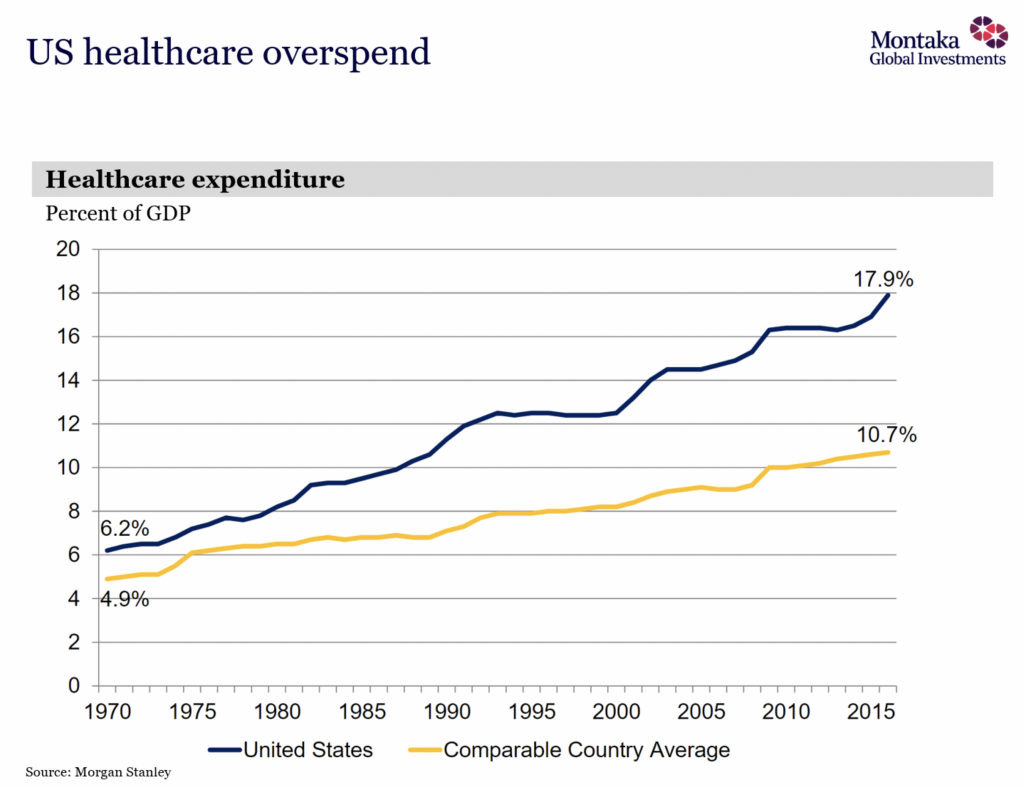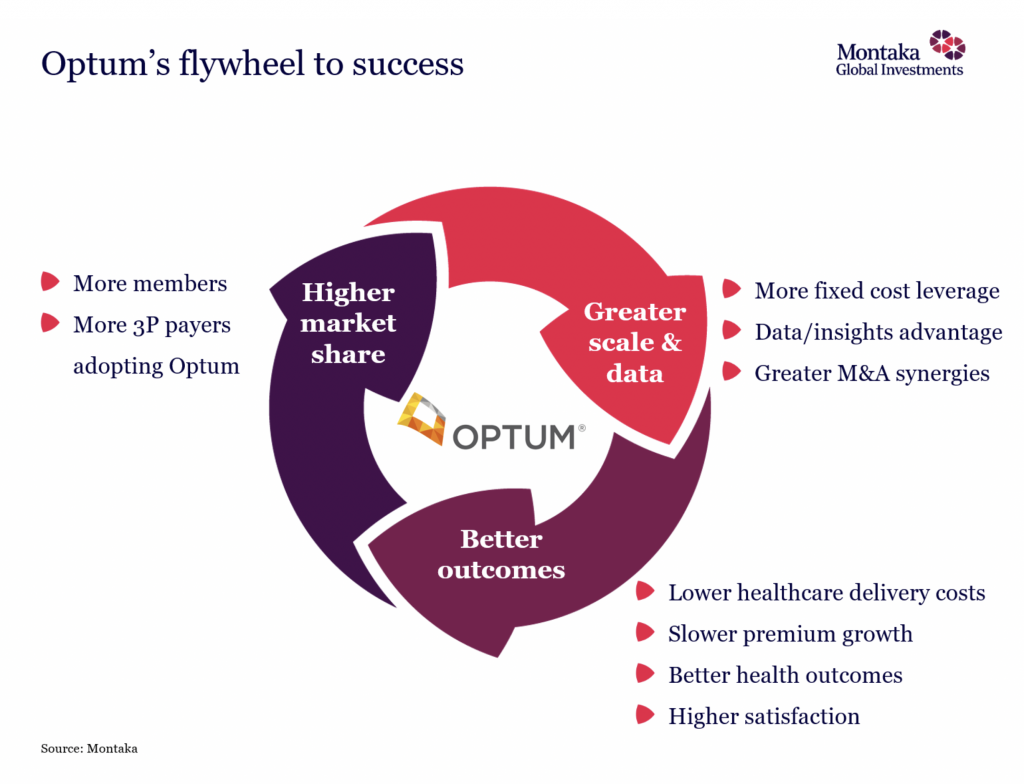Investor Insights
SHARE
Optum – a hidden gem in US healthcare
It is no secret that healthcare expenditure in the United States is an outlier compared to other similar countries. And, similar to much of the rest of the developed world, demand for healthcare in the US will only accelerate as the baby boomers continue to retire en masse. Today, there are approximately 55 million US citizens over the age of 65 years old. By 2030, there will be approximately 75 million.
A solution to deliver more effective healthcare, more intelligently and efficiently is so desperately needed. And hidden inside the largest health insurer in the US, UnitedHealth Group, is a technology platform business, with positive network effects, that is quietly bringing about this solution. That business is called Optum.
Introduction to Optum
Optum is a capital-light, technology-enabled health services business leveraging distinctive capabilities in data and analytics, pharmacy care services, population health, health care delivery and health care operations. Its three segments are: (i) OptumHealth; (ii) OptumInisght; and (iii) OptumRx, as illustrated below.
We view Optum as a platform that directly delivers healthcare to nearly 100 million members in an increasingly effective and efficient way, on behalf of both UnitedHealthcare (UnitedHealth’s own health insurance business) and more than 80 third-party payers. Optum leverages insights from data, as well as the “value-based-care” philosophy of risk-sharing with its own primary care providers, including its 52 thousand physicians, to drive better outcomes.
Just a few weeks ago, the company described how Optum nurses were meeting the increasing need for infusion services in the comfort and safety of people’s homes – a trend which is growing double-digits per annum. According to UnitedHealth, home infusion visits by Optum’s nurses result in fully equivalent clinical efficacy, greater patient convenience and satisfaction, and reduced risk to immuno-compromised patients. And importantly, delivering infusion services this way can be delivered at up to one-half the cost of traditional settings.
Optum’s flywheel to success
We believe Optum’s advantages will only strengthen over time, thanks to the positive, self-reinforcing network effects associated with its business. As illustrated below, Optum uses its scale and data to deliver healthcare at a lower cost on behalf of its largest client, UnitedHealthcare, and its many other third-party payers. By delivering healthcare more efficiently and effectively, outcomes are better, patients are more satisfied, and payers can increase their premiums at slower rates – thereby, increasing market share. As more third-party payers partner with Optum, its scale builds and its flywheel gathers speed.
At the heart of Optum’s advantage is data, as it is for so many of the world’s great businesses today. We believe Optum has a clear data advantage in the US healthcare industry, and this advantage is growing. Optum sources data in a number of ways, including: from payers – especially UnitedHealthcare, the country’s largest insurer; through its own primary data collections – for example, when nurses visit patients at home, they also collect significant environmental data; and patient data via its physician network – also the largest in the country. And this patient data is key. It contains the clinical data that is critical to derive learnings around efficacy and preventative care opportunities. It is perhaps no surprise, therefore, that Optum has been acquiring physician networks aggressively in recent years.
A long-term investment opportunity
Over the longer-term, the Optum flywheel is targeting the very large areas of healthcare expenditure in the US, such as chronic disease care. This is critical given those suffering chronic disease drive a disproportionate share of healthcare spend. As the company disclosed last year: the 30 million people in the US with three or more chronic diseases account for two-thirds of healthcare spending today, and the number of people is expected to grow to 80 million by 2030.
Today, the revenue per member in OptumHealth is around $20 per month – not much more than a Netflix subscription. Last year, the CEO of UnitedHealth said that, in the extreme and over many decades, this number could get up to $900-1000 per month!
This is a multidecade growth story. And one that we believe is not being fully appreciated by the market. This misperception is perhaps a consequence of Optum – a capital-light business, being mixed in with UnitedHealthcare – a more capital intensive business. Over time, as the contribution from Optum continues to grow, we believe the market will start to realise the true potential of this platform.
We are delighted to announce the launch of the Montaka Global Extension Fund (Quoted Managed Hedge Fund) (ASX: MKAX). This new fund gives investors access to a portfolio of global growth opportunities through one online trade. You can also register to receive more information about the fund here: MKAX: Register Your Interest
The Montgomery Global Funds and Montaka own shares in UnitedHealth. This article was prepared 13 August with the information we have today, and our view may change. It does not constitute formal advice or professional investment advice. If you wish to trade UnitedHealth you should seek financial advice.




